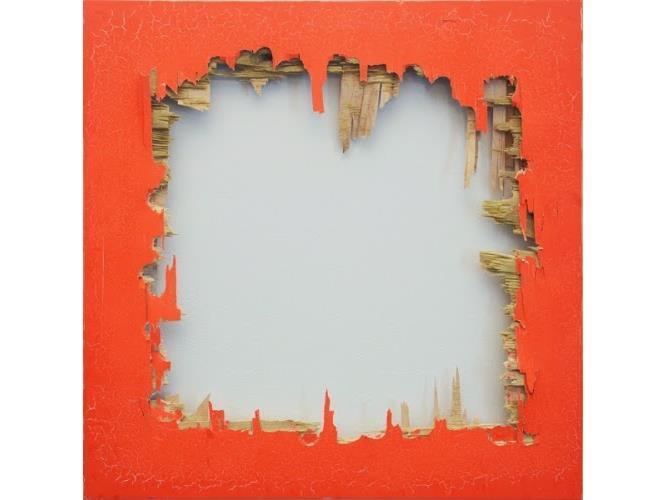High Value Target (2014) by Matthew Deleget, a contributor to The Artist as Culture Producer. Photo courtesy the artist
At the dawn of the High Renaissance, in 1480 to be exact, the wealthiest artist in Florence was Neri di Bicci, who didn’t make his fortune from the altarpieces he’s known for today, but from the sale of small tabernacles containing a “painted plaster sacred image (made with a mold), and in an ‘antique style’ wooden frame.” The second richest artist in town was di Bicci’s student, Andrea di Giusto Manzini. He’s largely unknown today, but during his lifetime Manzini was also a “painter of plaster statues.” (1)
Artists, it appears, have always been creative at finding ways to sustain their creativity, and their artistic, personal, public, and financial lives have always been more complicated than they seem.
Only recently have we begun to talk about the economic and social realities of being an artist, long hidden under the myths of “genius” or “passion” that can marginalize the serious work of making art. Books like this one are helping those artists trying to shake free of the unrealistic fantasy created by a steady stream of inflated stories about the luxury art market and how it caters only to the richest 1%.
Though the new media spotlight on contemporary art has given the field renewed attention and glamour, there’s another type of renaissance taking place in the art world around the evolving relationship of artists to society, and it’s one that’s largely overlooked.
This new wave is being led by creative individuals working to revitalize their communities, often redefining their roles, and challenging the boundaries of art today. Artists are our conscience; they are innovators, healers, chance-takers, and activists. Most importantly, they are a microcosm of society.
Artists excel at generating new models, and their resilience and popularity often come because they respond to the idea of culture as a lived, constantly evolving, and malleable thing that springs from the fount of everyday life. If contemporary art, particularly its newer forms—like performance, new media, street art—has blurred the boundaries of work and life, then all the systems that sustain this type of work are slowly catching up.
The lives of artists tell us about our society, and how we do (or more shockingly don’t) properly value those who help produce some of the most important aspects of our culture. They are stories we need to hear.
Some may be apprehensive about the idea of artists as cultural producers, but the evolving nature of artistic practice means we have to adapt our language to reflect a new reality. Artists can’t be beholden to old stereotypes of inspired acts of creation—or even galleries and museums—to determine their path.
They work in culture, but they’re also plugged into larger networks of power, finance, identity, and information systems; they create the objects, generate the ideas, and produce the models that allow others to dream, feel, and ponder. Sometimes they reflect our world back at us, and the best of them do it with uncanny precision. Others imagine what we thought impossible and wait while everyone else catches up.
In my dream world, artists would be part of every aspect of our lives. They would help make hospitals more receptive and healing places; they would create street furniture that encourages contemplation and community; and they’d help local governments communicate more effectively with the public.
How do we create art that challenges capitalism? How can we find new ways to give comfort to those confronted with violence? How do we shed light on those overlooked by society? Why do we make art in a culture that can be antagonistic towards it? Why even continue? The answer to these questions lies in the work of individuals who imagine the future before us, and we call them artists.
This article is from the introduction to The Artist as Cultural Producer: Living and Sustaining a Creative Life edited by Sharon Louden and published by Intellect.
Sharon Louden and Hrag Vartanian will be in conversation at:
Carriageworks, Sydney – 19 April, 6pm. Details
Raygun Projects, Toowoomba – 22 April 10am – 11.30am, Free. To Register
QAGOMA, Brisbane – Saturday, 22 April, 3pm. Details
Tasmanian College of the Arts, Hobart – Sunday, 30 April 3-5pm. Details
All events are free.
Note
(1). Guerzoni, Guido. Apollo & Vulcan: The Art Markets in Italy 1400–1700 (East Lansing, MI: Michigan State University Press, 2011), p. xxiii





